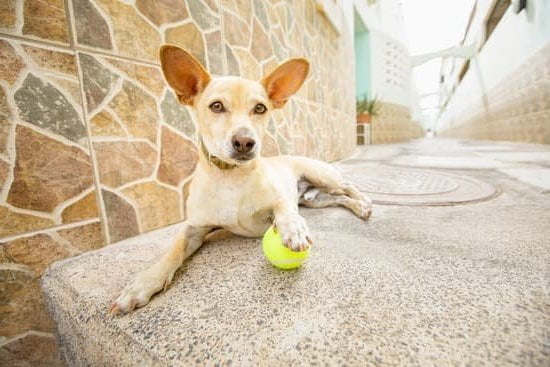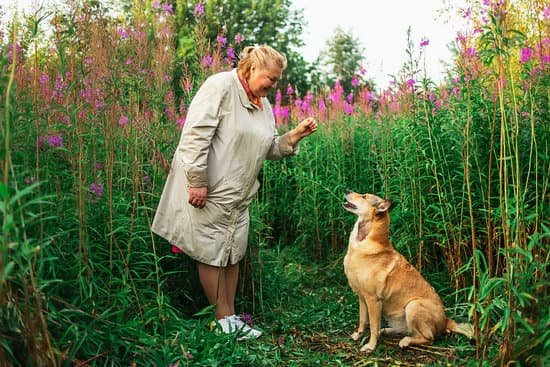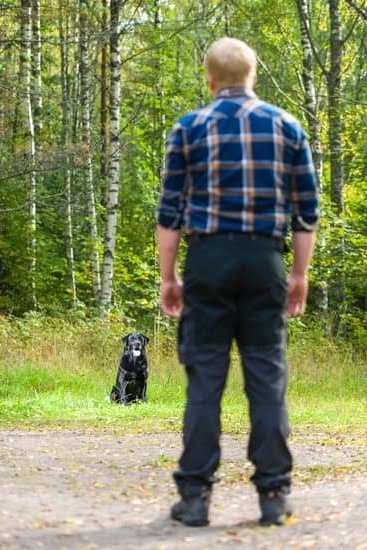Are you struggling to control your dog on walks? Learning how to train your dog to walk on a leash is essential for both their safety and your peace of mind. A well-trained dog can make the walking experience enjoyable for both you and your furry friend.
Leash training not only helps to keep your dog safe but also provides them with mental stimulation and physical exercise. In this article, we will discuss the importance of leash training for dogs and provide you with a comprehensive guide on how to effectively train your dog to walk on a leash.
Leash training is an important aspect of owning a dog, as it enables you to have better control over your pet in various situations, such as when encountering other dogs or people during walks. This not only ensures their safety but also the safety of others around them. In addition, leash training helps to curb any excessive pulling or lunging behavior, making the walking experience more enjoyable for both you and your canine companion.
Before diving into the specifics of leash training, it’s important to understand the fundamental principles behind it. It’s essential to have the right tools and equipment, understand your dog’s behavior, and be patient throughout the training process.
By gaining a deeper understanding of leash training, you’ll be better equipped to tackle any challenges that may arise along the way. So let’s explore everything you need to know about effectively leash training your dog for a more enjoyable walking experience.
Getting Started
When starting the process of leash training your dog, it is crucial to have the right tools and equipment to set you and your furry friend up for success. The key items you will need include a proper leash, collar, and treats for positive reinforcement.
Leash Selection
Choosing the right leash for your dog is essential in ensuring a successful training experience. Look for a leash that is strong, durable, and of an appropriate length for your dog’s size. Some popular options include retractable leashes, standard nylon leashes, and leather leashes. Consider factors such as comfort, ease of use, and flexibility when making your selection.
Collar Options
Selecting the right collar for your dog is equally important. The two most common types of collars used for leash training are standard buckle collars and harnesses. Each has its own benefits – buckle collars provide control over the dog’s neck while harnesses are gentle on the neck and can be helpful for dogs prone to pulling. Be sure to choose a collar that fits comfortably but securely around your dog’s neck.
Treats for Positive Reinforcement
Treats are an important tool for encouraging good behavior during leash training. When teaching your dog to walk on a leash, using treats as positive reinforcement can help them understand what behavior is expected of them. Choose small, tasty treats that are easy to carry with you during walks and be consistent in rewarding your dog when they exhibit the desired behavior as you train them on how to walk on a leash.
By having these essential tools and equipment in place, you will be well-prepared to begin the process of training your dog to walk on a leash effectively. Remember that patience, consistency, and positive reinforcement play vital roles in this training process. With the right approach and resources at hand, both you and your canine companion will enjoy a successful journey towards mastering walking on a leash together.
Choosing the Right Leash and Collar for Your Dog
When it comes to leash training your dog, choosing the right leash and collar is essential for a successful training process. Here are some essential tools and equipment you will need to get started with leash training:
- A sturdy, durable leash: The first step in choosing the right leash for your dog is to consider its size and strength. For larger, stronger dogs, a thicker and heavier leash is necessary to ensure control during walks. Smaller dogs can get away with a lighter, thinner leash.
- The appropriate collar or harness: There are various types of collars and harnesses available in the market, so it’s important to choose one that best suits your dog’s breed and behavior. For example, a martingale collar can prevent the dog from slipping out of the collar, while a harness can be gentler on the neck for dogs prone to pulling.
- Retractable vs. standard leashes: Retractable leashes give dogs more freedom to roam and explore during walks, but they also require more control from the owner. Standard leashes provide better control but limit the dog’s range of motion.
It’s important to remember that every dog is unique, so what works for one may not work for another. Take your time in choosing the right leash and collar for your dog before starting the training process.
Now that you have an idea of the tools you need for leash training, let’s move on to understanding your dog’s behavior and preparing for leash training. Understanding how your dog behaves and reacts will help make the training process smoother and more effective.
Understanding Your Dog’s Behavior
Before embarking on the journey of leash training your dog, it is crucial to understand your dog’s behavior and temperament. Each dog is unique and may react differently to leash training, so it’s important to assess their behavior beforehand.
An essential step in preparing for leash training is to observe how your dog reacts to being on a leash. Some dogs may be excited and ready to explore, while others may feel anxious or uneasy when restrained by a leash.
It’s also necessary to consider your dog’s breed and size when preparing for leash training. Larger breeds may require a sturdier collar and leash, while smaller breeds may benefit from a lightweight and comfortable harness. Additionally, understanding your dog’s energy level and activity needs will help determine the best approach to leash training. For example, high-energy dogs may need more frequent walks and mental stimulation during leash training sessions.
Another important aspect of understanding your dog’s behavior before beginning leash training is assessing any previous negative experiences with leashes or collars. If your dog has shown fear or discomfort with leashes in the past, it’s crucial to address these issues before starting formal leash training. This may involve desensitization exercises or seeking guidance from a professional trainer.
In summary, understanding your dog’s behavior is the first step in preparing for successful leash training. By observing their reactions to leashes, considering their breed and size, and addressing any previous negative experiences, you can create a tailored approach to leash training that suits your dog’s individual needs.
| Understanding Your Dog’s Behavior | Preparing for Leash Training |
|---|---|
| Assess how your dog reacts to being on a leash | Observe their behavior before starting formal leash training |
| Consider their breed, size, energy level, and activity needs | Determine the best approach based on their individual characteristics |
| Address any previous negative experiences with leashes or collars | Create a tailored approach that suits your dog’s individual needs |
Step-by-Step Guide
Establishing the Basics
Before you can start leash training your dog, it’s important to ensure that they have a basic understanding of commands such as “sit,” “stay,” and “come.” These commands will be essential for successful leash training, as they create a foundation for communication between you and your dog.
Introducing the Leash and Collar
To begin leash training, introduce your dog to the leash and collar in a positive and gentle manner. Start by allowing them to sniff and investigate the collar and leash before gently fastening it around their neck. Be sure to use treats and positive reinforcement to create a positive association with the leash.
First Steps With the Leash
Once your dog is comfortable with wearing the collar and leash, take them for short walks in a familiar environment such as your backyard or living room. Encourage them to walk alongside you using treats and praise. If they resist or pull on the leash, stop walking and wait for them to relax before continuing.
By following these initial steps, you can start laying the groundwork for successful leash training. Remember that patience, consistency, and positive reinforcement are key when teaching your dog how to walk on a leash. As you progress through this process, both you and your furry friend will benefit from the increased freedom and opportunities for exercise that come with successful leash training.
Dealing With Common Challenges and Behavioral Issues
Leash training a dog can come with its fair share of challenges and behavioral issues, but with patience and consistency, these can be overcome. One common challenge is when a dog pulls on the leash, making walks uncomfortable and difficult for both the owner and the pet. This behavior can be addressed through positive reinforcement and teaching the dog to walk calmly by your side.
Another common issue is when a dog becomes fearful or anxious while walking on a leash, leading to behaviors such as barking, lunging, or trying to escape the leash. This can be addressed by desensitizing the dog to the leash and its surroundings, as well as providing reassurance and positive experiences during walks.
Some dogs may also exhibit stubbornness or resistance to leash training, making it difficult for them to follow commands or stay focused during walks. In such cases, it’s essential to use techniques that motivate and engage the dog, such as using treats or toys as rewards for good behavior.
| Common Challenges | How to Address |
|---|---|
| Pulling on the leash | Use positive reinforcement and teach calm walking |
| Fear or anxiety while walking | Desensitize the dog to the leash and provide reassurance |
| Stubbornness or resistance | Use motivating techniques such as treats or toys for rewards |
By understanding these common challenges and behavioral issues, dog owners can effectively address them in their training routines. Overcoming these obstacles is key to achieving successful leash training for a well-behaved and happy canine companion.
Tips for Maintaining Leash Training Success
Now that you have successfully trained your dog to walk on a leash, it is important to maintain their good behavior. Here are some tips for keeping up with leash training success:
- Consistency is key: Just like in the initial training process, consistency is crucial for maintaining leash training. Make sure to continue using the same commands and techniques every time you go for a walk with your dog.
- Regular practice: Even after your dog has mastered walking on a leash, it’s important to continue practicing regularly. This will help reinforce their good behavior and prevent them from regressing.
- Reward good behavior: Don’t forget to praise and reward your dog for walking nicely on the leash. Positive reinforcement will encourage them to continue behaving well during walks.
In addition, there are some common challenges that may arise when maintaining leash training success:
- Distractions: Dogs can easily get distracted during walks, especially in new environments. Be patient and use gentle reminders to keep them focused on walking beside you.
- Pulling on the leash: If your dog starts pulling on the leash, avoid moving forward until they come back to your side. With patience and consistent training, they will eventually learn that pulling won’t get them where they want to go.
- Reinforce boundaries: It’s important to reinforce boundaries with your dog during walks. If they start veering off or trying to lead the way, gently guide them back to your side and continue walking.
By following these tips and staying patient and consistent, you can ensure that your dog maintains good leash behavior for a lifetime of enjoyable walks together.
Taking Leash Training to the Next Level
Once your dog has mastered the basics of walking on a leash, you may want to take their training to the next level by introducing some advanced techniques. These advanced techniques can help reinforce good behavior and improve your dog’s obedience while on a leash.
One advanced technique that can be helpful in leash training is teaching your dog to walk politely without pulling on the leash. To do this, you can use a method called “stop and go” where you stop walking as soon as your dog starts pulling on the leash.
Wait for your dog to relax the tension on the leash before continuing to walk. This teaches your dog that pulling will not get them where they want to go and encourages them to walk calmly by your side.
Another advanced technique is teaching your dog to maintain focus and attention on you while walking on a leash, even in distracting environments. You can practice this by using treats or toys to redirect your dog’s attention back to you when they become distracted. Over time, your dog will learn that paying attention to you results in positive reinforcement, making them more likely to focus on you during walks.
Additionally, consider incorporating obedience training commands such as “sit,” “stay,” and “heel” into your leash training sessions. This can help reinforce good behavior and further improve your dog’s responsiveness while walking on a leash in various situations.
By applying these advanced techniques, you can continue to build upon the foundation of leash training with your dog, ultimately leading to a well-behaved and obedient companion during walks. Remember that consistency, patience, and positive reinforcement are key elements in successfully implementing these advanced techniques for leash training.
Conclusion
In conclusion, leash training is an essential part of raising a well-behaved and obedient dog. By following the step-by-step guide and understanding your dog’s behavior, you can effectively train your furry companion to walk on a leash without any hassle.
It’s important to remember that patience, consistency, and positive reinforcement are key when it comes to leash training. Taking the time to properly train your dog will result in a bond of trust and respect between you and your pet.
As you continue with leash training, it’s crucial to address any common challenges and behavioral issues that may arise. Whether it’s pulling on the leash or getting easily distracted during walks, there are methods and techniques that can help overcome these obstacles. It’s also beneficial to seek professional help if needed, as some dogs may require additional support and guidance in their training.
Once your dog has mastered walking on a leash, maintaining success is just as important as the initial training process. Consistently reinforcing good behavior and providing regular exercise will ensure that your dog remains well-trained on a leash. Additionally, advancing to more advanced techniques for a well-behaved dog will further enhance the bond between you and your furry companion while enjoying the benefits of having a well-trained dog on a leash.
Overall, investing time in proper leash training is not only beneficial for the owner but also for the dog. A well-trained canine companion makes for enjoyable walks, outdoor activities, and peaceful interactions with other people and pets. Remember that with dedication and perseverance, anyone can successfully train their dog to walk on a leash with ease.
Frequently Asked Questions
How Do You Train a Dog to Walk on a Leash Without Pulling?
Training a dog to walk on a leash without pulling requires patience and consistency. Start by teaching your dog the “heel” command, rewarding them for walking beside you. Use positive reinforcement and redirect their attention if they start pulling.
How Do I Stop My Dog From Pulling When I Walk on a Leash?
If your dog tends to pull when walking on a leash, try using a front-clip harness to discourage pulling. When your dog starts pulling, stop in your tracks and wait for them to calm down before resuming the walk. Consistency is key in this training.
How Do You Train Your Dog to Walk Beside You With a Leash?
To train your dog to walk beside you with a leash, begin by teaching them basic obedience commands such as “sit” and “stay.” Once they have mastered these commands, introduce loose leash walking, rewarding them for staying by your side. Consistency and positive reinforcement will help reinforce this behavior.

Welcome to the blog! I am a professional dog trainer and have been working with dogs for many years. In this blog, I will be discussing various topics related to dog training, including tips, tricks, and advice. I hope you find this information helpful and informative. Thanks for reading!





